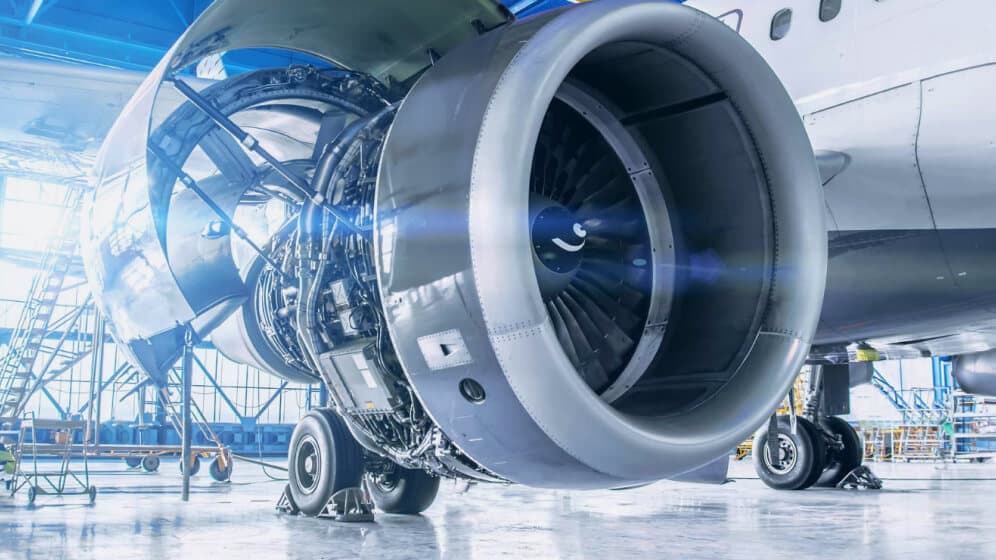Aerospace Supplier Cuts Defects in Half with Layered Process Audits

Overview
A leading global aerospace supplier turned to EASE for help streamlining its time-consuming quality audit processes. Automating administrative tasks around audits helped significantly boost audit completion rates, enabling real-time visibility into shop floor processes and a 53% reduction in customer defects.
Background
The organization is a tier I supplier that designs and manufactures a variety of components and systems for aerospace OEMs. Quality excellence and customer service are central to the company’s success, particularly in an industry where competition is tough and mistakes are costly.
Tasked with driving quality improvement across 21 plants globally, management developed a set of quality leading indicators that included six types of internal audits. One type of audit the company implemented was layered process audits (LPAs), which require multiple levels of personnel to participate in frequent checks of key processes— a recognized best practice for improving quality.
“When you need to manage thousands of these audits—and feel confident that you can effectively harness the data—you can’t reasonably expect to do that in a paper system. When you schedule, conduct and report on them electronically, all of those constraints disappear.”
—Director of Quality
Challenge
Like many manufacturers, the customer initially launched its LPA program using a paper-based process. That meant individually scheduling a large number of audits, distributing paper checklists, manually entering data and tracking completion of assigned audits.
According to the company’s director of quality, the administrative burden made it difficult to keep up with the frequency of audits critical to LPA success. Some plants were already having trouble completing just a dozen or so audits annually, raising questions of whether teams could reasonably complete such a large volume of audits.
“Even a smaller plant that needs 50 audits monthly probably only has a couple people in the quality department,” says the director of quality. “That means one of those people is spending considerable time managing the audits.”
Leaders agreed, at least conceptually, that LPAs could bring huge value to the organization. The challenge was finding a way to implement these unique audits without overloading the team, which could impact buy-in and results.
Solution
A new quality manager with experience applying technology to process standardization suggested using an automated tool to manage LPAs. Initially, the company evaluated EASE and another type of audit software, finding that the other solution felt outdated and didn’t meet their customization needs.
After a rigorous approval process, the company opted to pilot EASE for free in one of its plants, automating LPA details such as:
- Scheduling: The customer was able to schedule a year of LPAs for the plant in minutes, distributing audits at a frequency based on the person’s level in the organization.
- Follow-up: When it was time for an audit, EASE sent an email reminder containing a link to a mobile checklist. Conducting the audit on a smartphone or tablet, auditors could then flag issues for mitigation and corrective action. When people missed an audit, the system notified a supervisor via email.
- Reporting: Instead of having to manually enter data, leadership could see results as soon as audits were finished. Live dashboards allowed them to track metrics like on-time completion and make course corrections while data was still actionable.
- Checklists: The client was able to rotate in new questions as needed without manually recalling and redistributing paper checklists. The platform allowed them to randomize questions to address a wider variety of risks, also keeping audits fresh so people stayed engaged.
Results
Prior to implementing LPAs, one plant in particular struggled to complete just seven of 13 audits scheduled for the year. With the help of EASE, the plant now conducts over 100 audits monthly, roughly 85 of which are LPAs.
“It’s a staggering comparison going from seven per year to 100 every month,” says the director of quality. “Of all our indicators, auditing is one of the metrics that correlates most strongly with quality.”
He says this correlation allows leaders to predict when and where quality is headed in the wrong direction, giving them time to proactively resolve issues before they lead to complaints. Overall, the company has achieved a 53% reduction in customer defects with LPAs.
“In two plants now, we’ve been able to step in when leading indicators went down, before there was any change to lagging metrics like defects or complaints,” the director says.
Employees from several departments have also noted that LPAs supported by EASE are helping build a culture of quality by:
- Enabling earlier detection of process errors
- Sparking more conversations around quality and raising its visibility
- Connecting managers with operators’ shop floor experiences
- Engaging teams with mobile tools that people want to use
The EASE platform has become an integral part of the company’s quality process, allowing them to deploy a standardized strategy while rolling out LPAs to 21 plants in 6 countries.
“When you need to manage thousands of these audits—and feel confident that you can effectively harness the data—you can’t reasonably expect to do that in a paper system,” says the director of quality. “When you schedule, conduct and report on them electronically, all of those constraints disappear.”